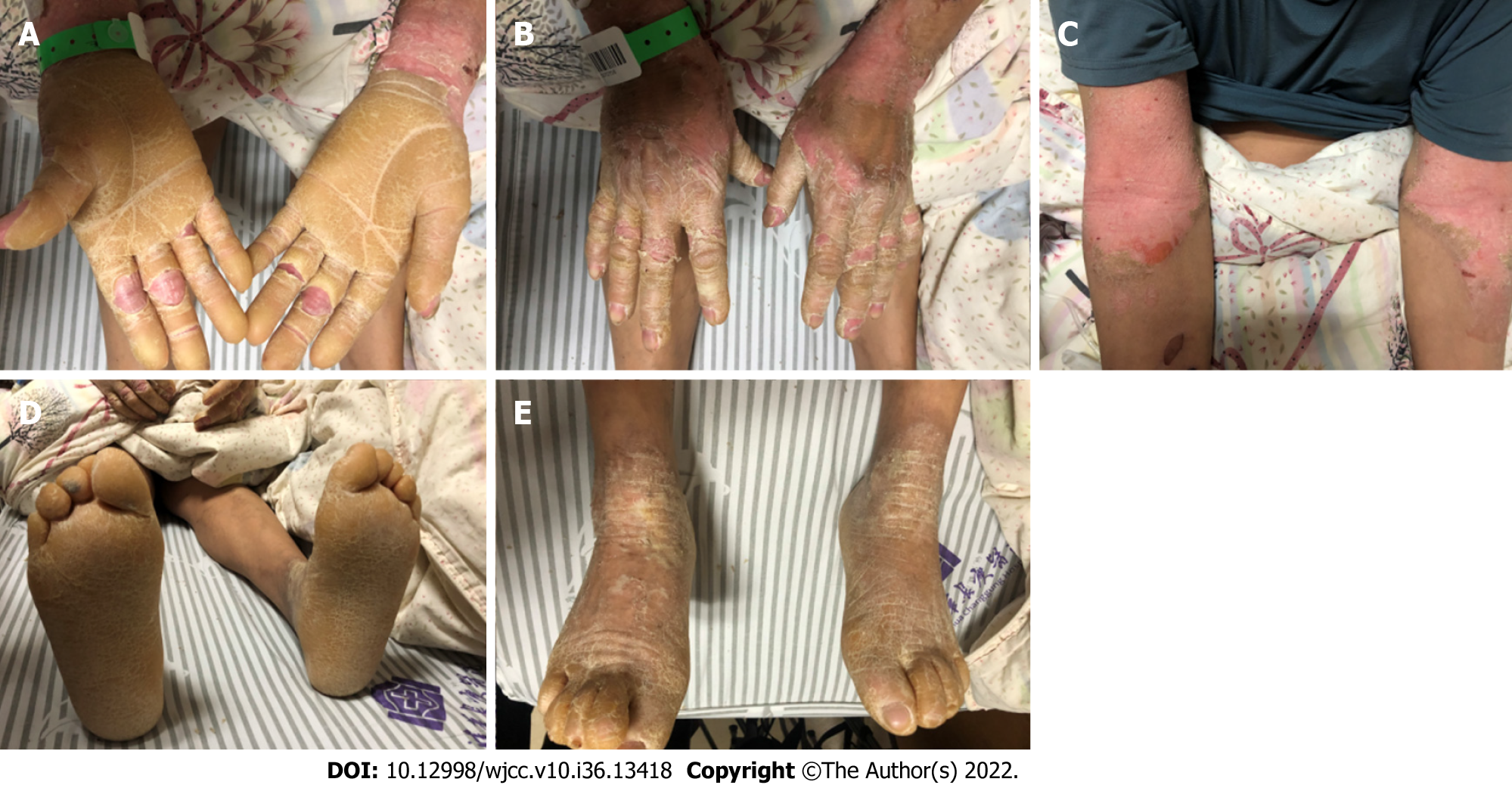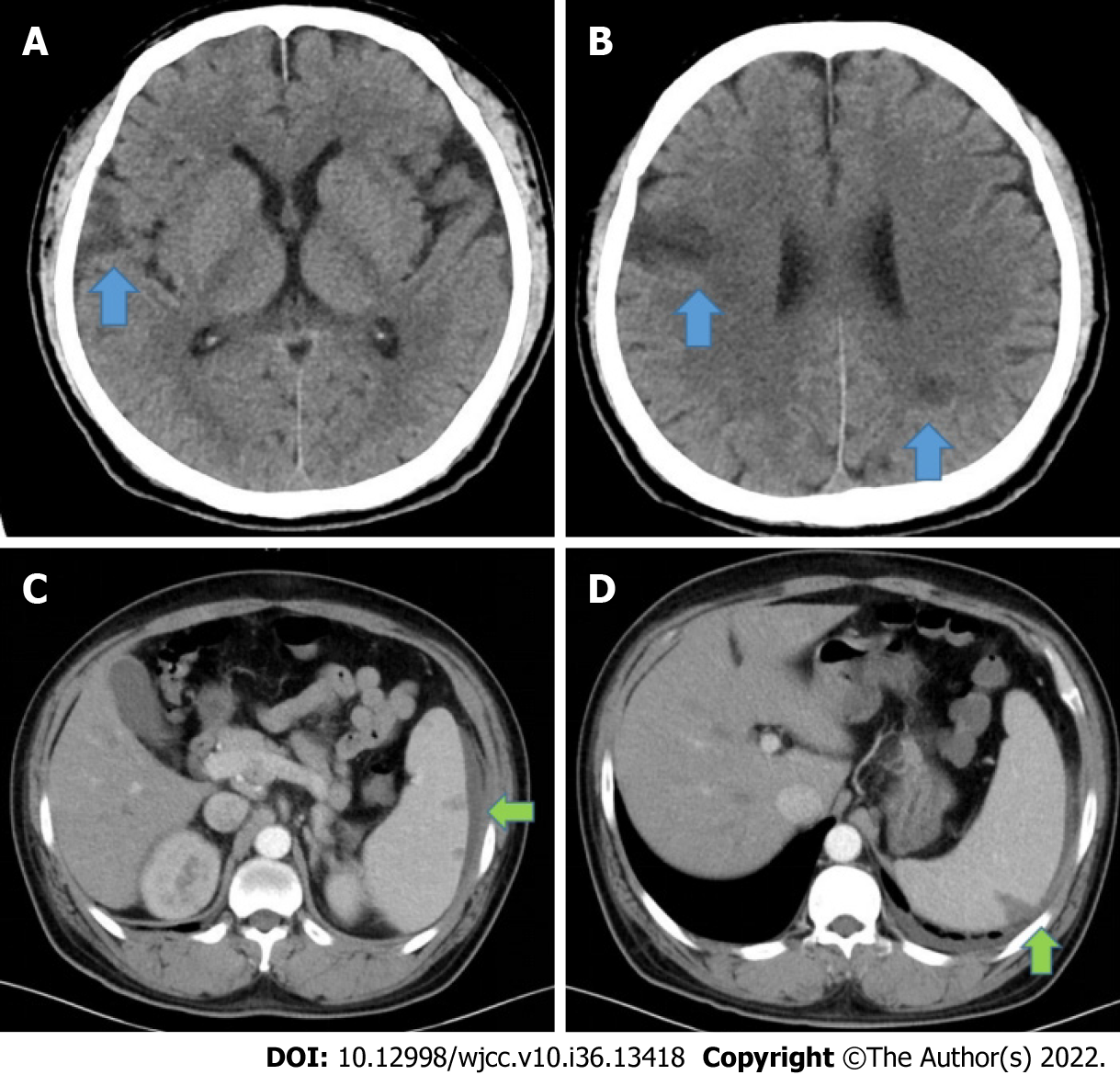Copyright
©The Author(s) 2022.
World J Clin Cases. Dec 26, 2022; 10(36): 13418-13425
Published online Dec 26, 2022. doi: 10.12998/wjcc.v10.i36.13418
Published online Dec 26, 2022. doi: 10.12998/wjcc.v10.i36.13418
Figure 1 Images of the skin lesions.
Diffuse palmoplantar hyperkeratosis, erythema, and scales on the flexor surfaces of both arms and lower limbs. A: Palms; B: Opisthenar; C: Arms; D: Planta pedis; E: Dorsum of the foot.
Figure 2 Computed tomography.
A and B: Cranial computed tomography showing multiple low-density shadows (blue arrow, A and B) in the brain; C and D: Abdominal enhanced CT scan showing multiple low-density shadows (green arrow, C and D) in the spleen, considered a splenic abscess with subcapsular effusion.
Figure 3 Transesophageal echocardiography.
A and B: The anterior leaflet of the mitral valve was detected with a wart (white arrow) of a cord-like medium echoic substance about 10mm and the posterior leaflet was detected with the wart (white arrow) of a medium echoic substance about 7 mm × 7 mm; C and D: There was severe mitral regurgitation and the regurgitation bundle was distributed along the posterior leaflet of the mitral valve. There was mild tricuspid valve and the aortic valve regurgitation.
Figure 4 Histopathological, and genetic features of the patient.
A and B: The c.539A>G mutation was detected in KRT1; C: The pathological examination indicated epidermal hyperkeratosis, acantholysis and lymphocytes infiltrating the superficial dermis around blood vessels and adjuncts (H&E stain, original magnification 100×); D: c.539A>G detection using Next Generation Sequencing and Sanger sequencing.
- Citation: Chen Y, Chen D, Liu H, Zhang CG, Song LL. Staphylococcus aureus bacteremia and infective endocarditis in a patient with epidermolytic hyperkeratosis: A case report. World J Clin Cases 2022; 10(36): 13418-13425
- URL: https://www.wjgnet.com/2307-8960/full/v10/i36/13418.htm
- DOI: https://dx.doi.org/10.12998/wjcc.v10.i36.13418












